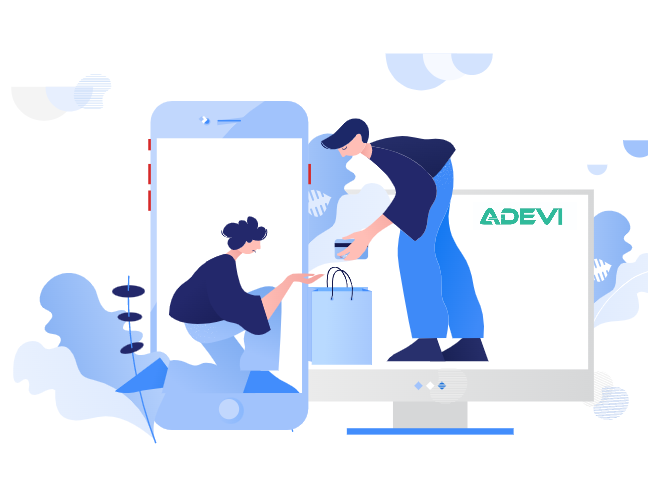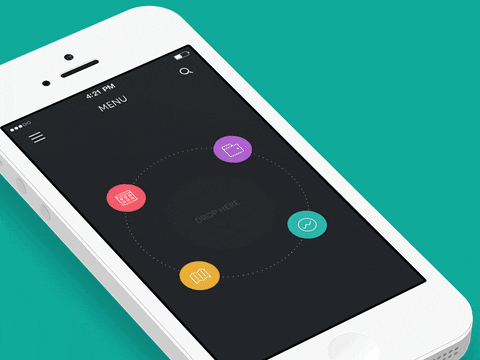Why should you prototype your app ideas?
No matter how clear your idea and vision appear on paper, designing as simple as a digital prototype is a quickest and simplest way to identify and fill missing gaps while taking a different idea evaluation perspective, whether you’re developing a disruptively innovative product or a uniquely repurposed solution.

Why should you prototype your app ideas? | ADEVI Blog Article Image | www.adevi.io
For any startup, prototyping is an essential tool. While no business owner is immune to making mistakes, prototyping allows you to make less expensive mistakes before investing more time and money.
What is app prototyping?
A prototype of a mobile app shows how a product will work. Prototyping can be done in a variety of ways, but in mobile app development, a prototype usually begins with sketches or a paper interface and progresses to an interactive model that resembles the final result. A prototype’s objective is to describe a product’s design and navigation flow in order to maximize development efficiency. Prototyping is a useful exercise that allows you to visualize how the app will work by showcasing user flows and displaying a working design and layout. A prototype, of course, will contain errors; but, a prototype permits these errors to be found early in the project’s development.
Define product features
One of the most significant benefits of prototyping early in the startup development process is that it allows you to have a better understanding of your product’s features and functionality. You can expand on your product idea and integrate finely detailed product qualities into your prototype even with low-fidelity, hand-drawn prototypes.
You can develop a superior understanding of the design and flow of your product as you progress to more advanced stages of prototyping using wireframes, clickable prototyping tools, and even 3D printers. You can also define and better understand the difference between must-have and good-to-have features as you progress to more advanced stages of prototyping using wireframes, clickable prototyping tools, and even 3D printers.
Client and stakeholder involvement
It’s beneficial to include the most significant stakeholders in the planning process throughout the prototyping phase. Stakeholders should have as much ownership of the project’s design ideas and decisions as possible. Developers, for example, may find a certain design option appealing, but the notion is technically challenging, and time limitations restrict them from exploring alternative alternatives. It’s beneficial to involve the most significant stakeholders in the planning process throughout the prototyping phase. Stakeholders should have as much co-ownership of the project’s design ideas and decisions as possible. Developers, for example, may find a specific design decision appealing, but the notion is technically challenging, and time restrictions prevent them from experimenting with other options.
UX validation
It’s a difficult undertaking to create a mobile product that generates deep user engagement. One of the most effective techniques of validating usability and UX is to put a prototype through a user test.
Only 32% of users continue to use an app after three months, while 21% abandon an app after one use, according to Localytics. It’s critical to set a goal that is more than just about the number of downloads. The purpose of UX design is to keep users engaged by offering ongoing value, and a prototype will be used to evaluate the app’s potential for app engagement, longevity, and lifetime value. Again, cost-cutting is the priority before moving forward with the project.

Conduct early user testing to get insights
As soon as feasible, get your product into the hands of users. Early testing will help you figure out whether people will like your concept, which features will appeal to them, and how to structure your screens. To make sure your product is on point, get customer input on features, design, and user flows.
Conclusion
Mobile app prototyping is a quick and low-cost way to validate a mobile app concept, but it also has a number of other advantages, such as eliciting new ideas and areas for improvement, involving clients and stakeholders, and ensuring that everyone on the team is on the same page throughout the project lifecycle. Starting a project with a prototype can help you avoid common product blunders, such as incorrect features or a product that doesn’t have a place in the market.
Visit Adevi to enjoy the comfort of the best AI-assisted app prototyping platform.
Bonus tips
Elements to Consider In the Process of Prototyping

- The target audience: Proper understanding of who is your customer of the product or service you provide, what are their pain points and how you can eliminate that through your product or service with how would they (target audience) use the product or service
- Competition: Analyse your competition, not to copy from them but to understand and determine how and what can you do to improve your product/service while gaining insights into what are they not doing (loopholes), comprehend how you can implement and address those areas with your product/service.
- Core features to prototype: It’s your idea, take ownership of your great idea and prioritise the core features. It’s normal to get overwhelmed with having too many features to accommodate your initial idea but it’s important to get the core features to the front line. Give some thoughts on the initial stage of the idea and get a feel of the inspiration of the idea, this will give a direction on which features you would want to put on priority. This helps cut out non-essentials.
- User personas: Research! It could be observing behaviour, asking questions and reading articles to understand the goals and needs. Put yourself in their shoes, try to resonate with the potential customer and show a little criticism towards your own product/service if you have to because it’s about the external market which you have no control over and criticism is bound to occur. Build a persona for your ideal customer to aid you in tackling and communicating with that external market.
- User stories: Storytelling! Who doesn’t like a good story? Create a journey for your potential customer, including your findings and research into the story. Make it believable as well as authentic and contemporary. Create a story that has realistic obstacles for your potential customer, empathise with their pain points, how would your product/service accommodate those issues and how would users engage with your app? How would every feature of your app satisfy user needs?
Recent Post
-
Space Bar at the End of the Galaxy [Finished] - Version: Final
-
CREW 167 THE GRAND BLOCK ODYSSEY-CODEX
-
Helheim-RELOADED Download


